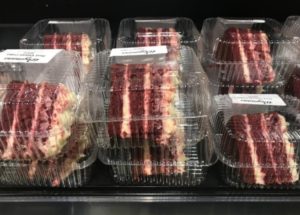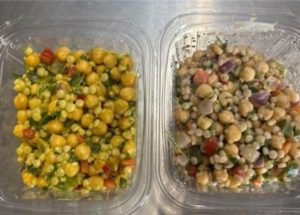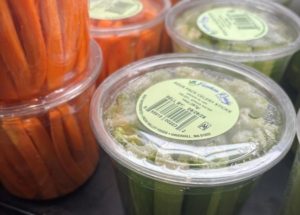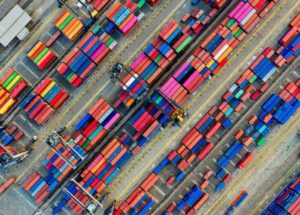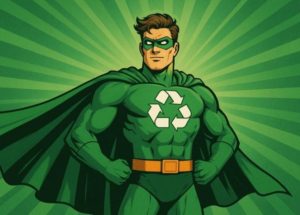Jul 23, 2025
The Hidden Cost of Lost Days: Why Shelf-Life Extension is an Investment, Not an Expense
Shelf-life extension is a profit lever — even one extra day reduces waste, saves labor, and protects margins across your operation. Oxygen, temperature swings, and poor packaging are silent killers of freshness — and they quietly drive up costs you can’t afford to ignore. Smart operators shift their mindset — the question isn’t “How cheap […]
Read More +
Jul 21, 2025
Does My Plastic Food Packaging Contain Phthalates?
PET, HDPE, and PP plastics are phthalate-free and safe for food use. Phthalates are used in flexible PVC, not rigid food containers. FDA regulations and supplier documents help confirm packaging safety. Stick with proven materials and trusted suppliers to avoid phthalate concerns. You’re running a successful food business that focuses on delivering high-quality products to […]
Read More +
Jul 18, 2025
How UV Light Affects Fresh Food in Packaging
UV light exposure can damage food quality, causing oxidation, nutrient loss, color fading, and flavor changes. UV-blocking films and coatings protect freshness and extend shelf life. Materials like PET offer partial protection, but additives improve UV defense. Choosing the right barrier means balancing protection, clarity, recyclability, and compliance. You just got a shipment of premium […]
Read More +
Jul 16, 2025
Are Shrink Bands ‘Shrinking Away’ or ‘Here to Stay’?
Shrink bands offer solid tamper protection, but come with labor, equipment, and sustainability costs. Use is declining as brands seek easier, greener, and more cost-effective alternatives. Supplier options are shrinking, making shrink bands harder and more expensive to source. C-wraps, labels, and built-in seals are rising as viable tamper-evident replacements. Let’s set the scene: You’re […]
Read More +
Jul 14, 2025
Why You Need to Understand the Carbon Footprint of Plastic Food Packaging
The carbon footprint of plastic covers its full life cycle, from production to disposal. PP and PE emit less CO₂e than PET; bioplastics aren’t always greener. Plastic often beats glass and paper in carbon impact due to light weight. Scope 3 emissions are big — better recycling helps reduce them. Imagine holding a plastic food […]
Read More +
Jul 11, 2025
How Would a Recession Affect the Plastics Industry?
Demand drops across the board, hitting plastics tied to automotive, construction, and consumer goods first as the result of a recession impact. The whole supply chain slows, from resin orders to tooling, production, and shipping. Early recession signals appear in retail and construction before plastic sectors feel the squeeze. Smart strategies include diversifying revenue, managing […]
Read More +
Jul 07, 2025
The Business Case for Recycling Stream Knowledge
Know the stream, not just recyclability — understanding whether packaging enters single-stream or dual-stream recycling affects actual recovery rates. Plastic types 1, 2, and 5 are key — PET, HDPE, and PP need proper sorting to avoid contamination in recycling plants. Modern sorting tech matters, but consumer behavior (and contamination) largely determines what actually gets […]
Read More +
Jul 02, 2025
Will Potential Tariffs Affect the Prices of Raw Materials for Plastic Food Packaging?
PET pricing stays stable due to global surplus and steady MEG supply, though PTA could face pressure from potential tariffs. PP is domestic and resilient, with strong U.S. production and minimal import reliance. Tariffs may still hit tooling, molds, and equipment, so raw materials aren’t the only concern. Best moves: audit your portfolio, favor domestically […]
Read More +
Jun 30, 2025
These Are the Best Recycling Practices for Food Industry Heroes
Master recycling codes: Recycle food-grade plastics (#1, #2, #5); avoid polystyrene and mixed plastics. Prep simply but smart: Light rinse only; leave caps, labels, and rings on. Optimize for equipment: Compress containers; keep small items attached so they don’t get thrown out. Know your local MRF: Understand nearby recycling tech and systems to design packaging […]
Read More +
Jun 27, 2025
What Do Those RIC Symbols on the Bottom of Packaging Mean?
RIC numbers (1–7) identify plastic types, not recyclability — e.g., “1” means PET, “2” means HDPE, “5” means PP. Symbols help sort plastics, so recyclers know what material they’re handling — not an assurance your local program recycles it. Consumer confusion is common — many mistake RIC for a recycling promise, leading to sorting mistakes. […]
Read More +

